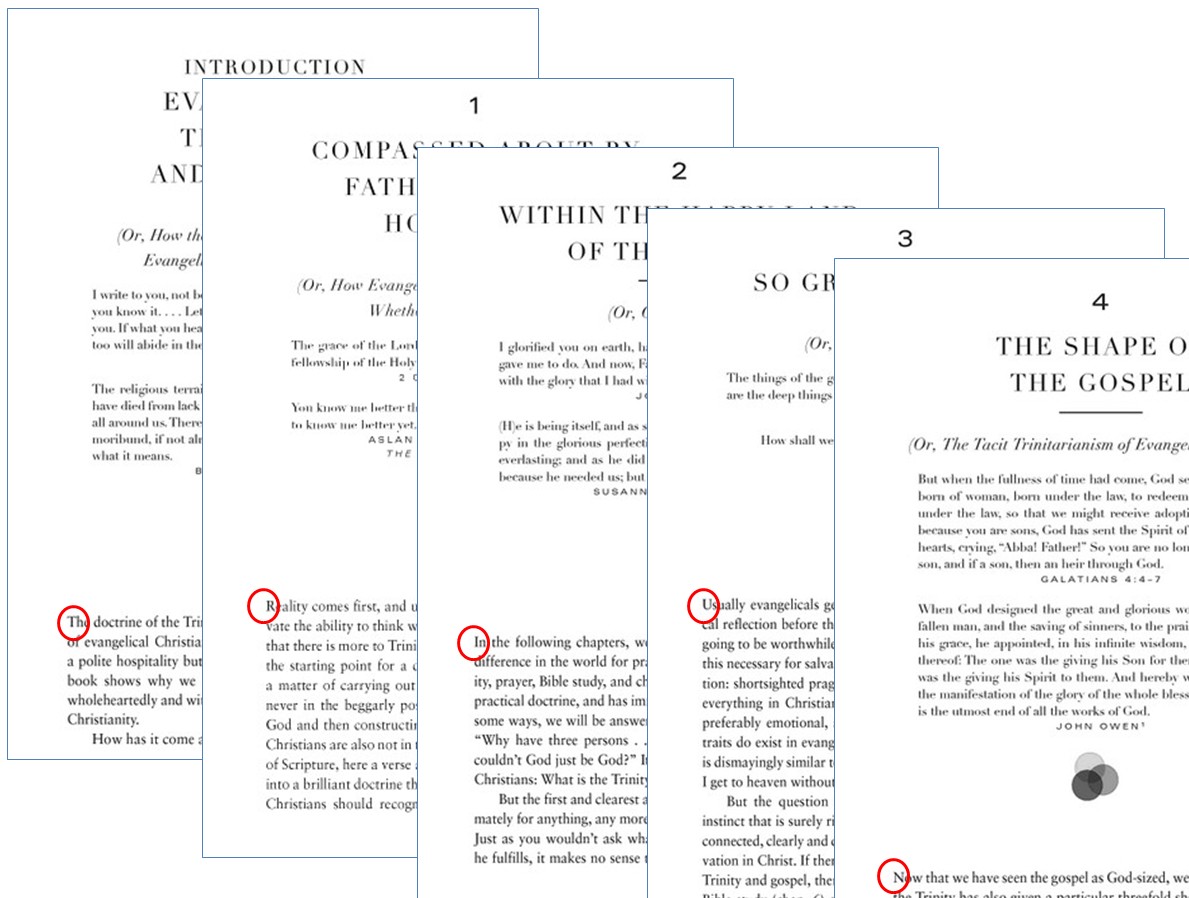When I published The Deep Things of God in 2010, I made a mental note to myself that I should eventually use this blog to let readers in on a fun little bit of extra information about the book. Then I lost the mental note somewhere on the mental desktop of my mental office. Now here it is a few years later, and something jogged my memory, so I’m finally getting around to mentioning this.
If you take the first letter of the first paragraph of each chapter (skipping title, sub-title, and epigraphs) of The Deep Things of God and read them in a row, it spells a word.

Once you’ve got this clue, it’s not really a big surprise what kind of word I’d put in there. The only question is why I’d do such a thing.
Some kind of authorial boredom is one reason. No matter how alert and focused I am on the task of composing and editing the prose on the page, some part of my mind is inevitably doing other kinds of processing simultaneously: listening to background music, planning little household tasks to get me up from the desk every 25 minutes or so, checking Twitter on a schedule instead of constantly. And one part of my mind needs to be playing games with words at all times: picking at etymologies, reversing letter sequences, scanning for anagrams, and other such nonsense.
Another reason is a quest for comprehensive unity, or at least a symbol of it: To spell out a single word over the course of a whole volume is a kind of gesture indicating that the book is about one thing. When I’m working on a writing project of a larger size, I’m constantly going back to the outline, making sure I am keeping a sense of the whole in mind and not getting lost in the parts. The outline needs to be visual: not just a list, but a diagram or shape of some kind. My visual outlines for this book always featured the requisite initial letter for each chapter, and I even changed the word when I made the major decision to cut a couple of chapters.
Finally, it helps an author to have some larger constraints in place instead of just writing into the void of absolute possibilities. As I wrote, I knew I had to fit things to this hidden-word structure. For example, even if I decided that I needed to change the opening gambit of a chapter, I still had to make it start with the letter T. Something about that was reassuring: I hadn’t left the grid, I was just changing the configuration a bit. This may sound like an arbitrary constraint that may have kept me from starting a chapter the best possible way (which, after all, might start with some other letter), but I experienced it as a challenge that sparked creativity.
I often do a few other little games and tricks with manuscripts, but this is the main one worth sharing. And I promise there are none in this blog post, so don’t bother reading initial letters to try to spell anything.
Finally, if this little revelation makes you wonder if I hid any words in my recent book Wesley on the Christian Life: The Heart Renewed in Love, the technical answer to that question would be “duh.”